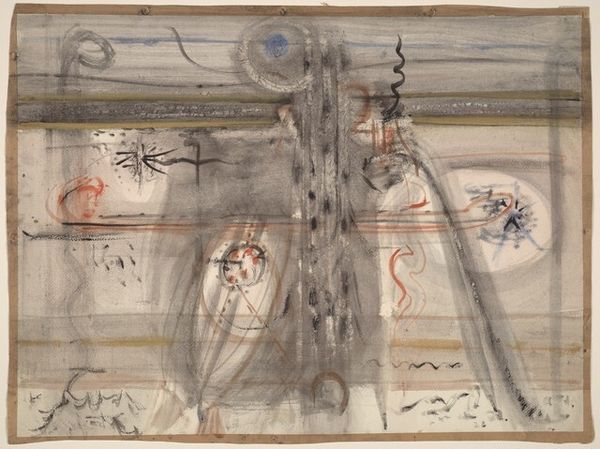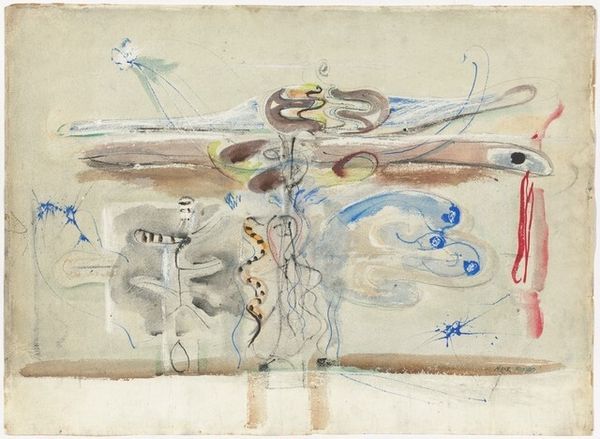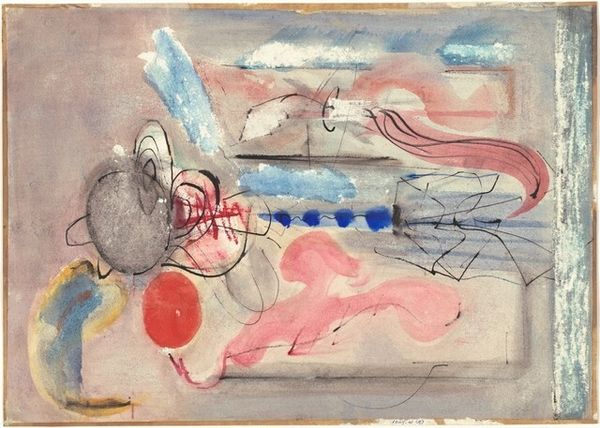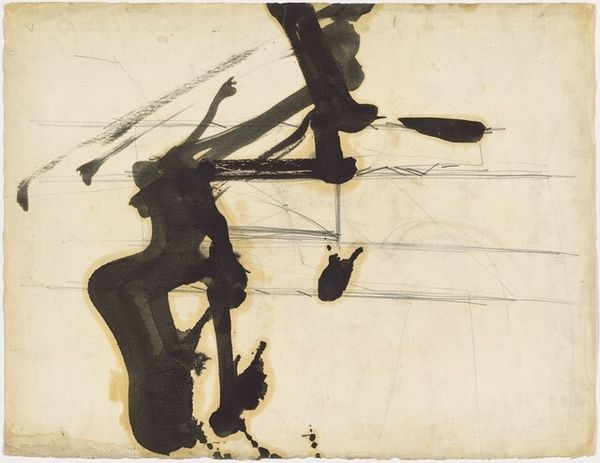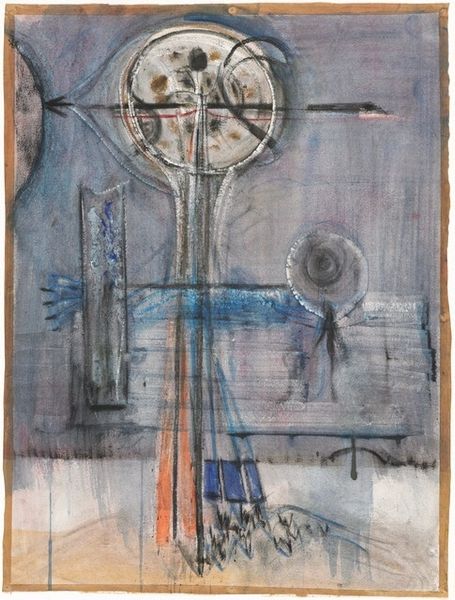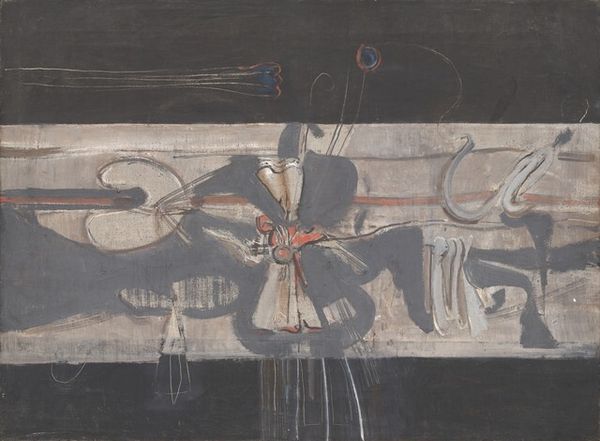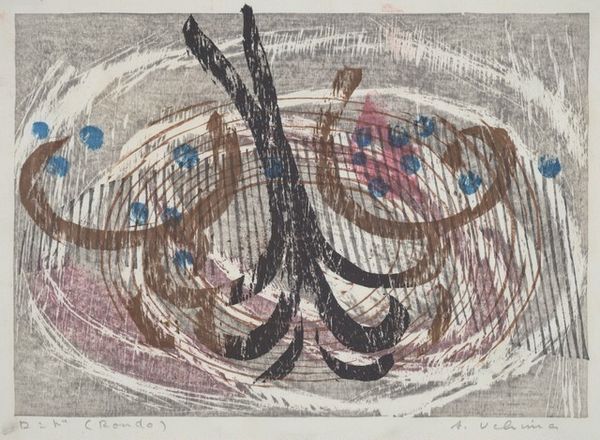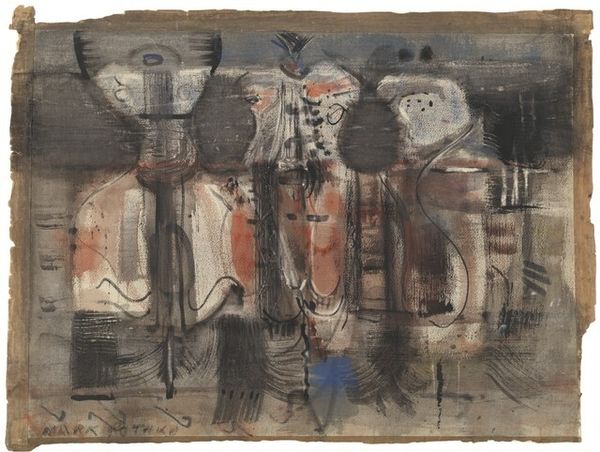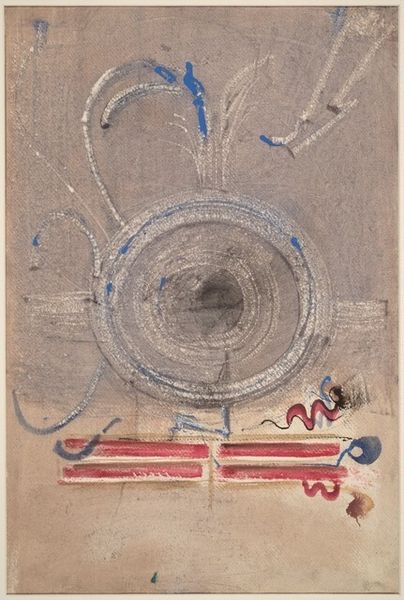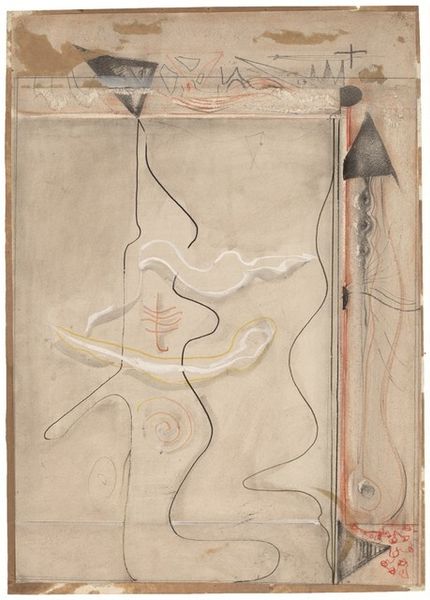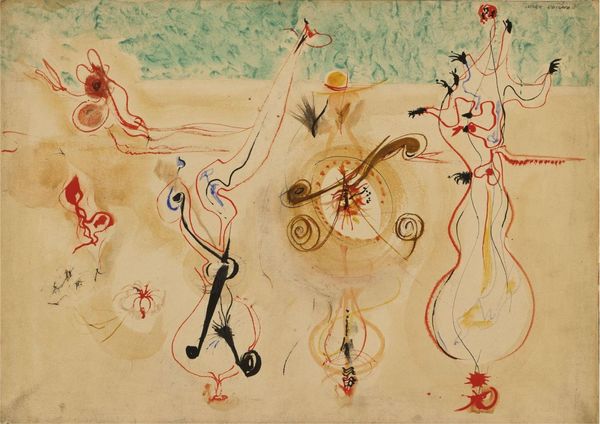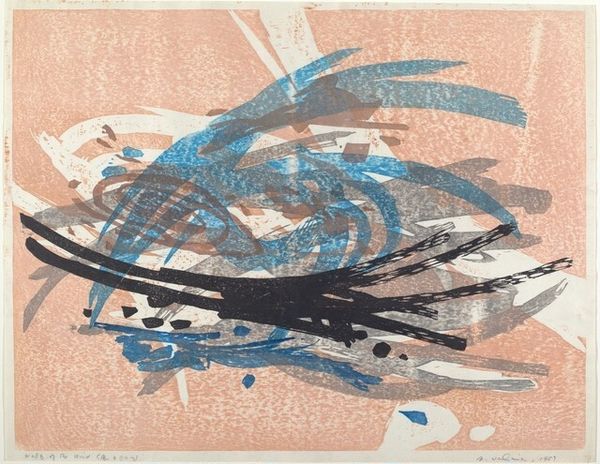![Untitled [verso] by Mark Rothko](/_next/image?url=https%3A%2F%2Fd2w8kbdekdi1gv.cloudfront.net%2FeyJidWNrZXQiOiAiYXJ0ZXJhLWltYWdlcy1idWNrZXQiLCAia2V5IjogImFydHdvcmtzLzg3NDgxNGQxLTNkYWMtNGUzYy04ZDllLTQ2NTdmYzkzYWFiZi84NzQ4MTRkMS0zZGFjLTRlM2MtOGQ5ZS00NjU3ZmM5M2FhYmZfZnVsbC5qcGciLCAiZWRpdHMiOiB7InJlc2l6ZSI6IHsid2lkdGgiOiAxOTIwLCAiaGVpZ2h0IjogMTkyMCwgImZpdCI6ICJpbnNpZGUifX19&w=1920&q=75)
drawing, watercolor
#
abstract-expressionism
#
drawing
#
organic
#
form
#
watercolor
#
abstraction
#
line
#
modernism
#
watercolor
Dimensions: overall: 55 x 75.5 cm (21 5/8 x 29 3/4 in.)
Copyright: National Gallery of Art: CC0 1.0
Curator: Mark Rothko's *Untitled [verso]*, made with watercolor, dates from around 1944 to 1946. Editor: There's a definite somber mood here, a kind of aquatic gloom with these ambiguous forms suspended in it. The gray watercolor wash sets the stage. Curator: These shapes are characteristic of Rothko’s move into biomorphic abstraction, the phase preceding his signature blocks of color. It calls up imagery from his past, influenced by mythological themes as well as experiences related to emigration. Do you get any such associations? Editor: Associations are tricky. However, I’m interested in how Rothko is employing the drawn line here. Note the way he uses contrasting blue and red to energize what is actually a very tight compositional field, bisected horizontally and filled with quasi-organic motifs. The shapes feel almost embryonic. Curator: That tight field also gives us the sensation of claustrophobia, echoing the feelings that his family was feeling with so much discrimination happening in the world and Rothko's fleeing from Russia. And the vertical emphasis reinforces our connection to these emotional forms. I sense primal imagery as well; something timeless. Editor: Perhaps, but those floating calligraphic forms owe quite a debt to European Modernism—the automatic writing of the Surrealists and Miró in particular. The palette here may feel grounded, but look at the confident draftsmanship. The lines move freely across the support. Rothko lets the watery medium do so much of the talking, creating transparency where forms overlap. Curator: Precisely! We are peering beneath surfaces into other states. Those seemingly spontaneous lines are actually highly evocative. They serve as vestiges of memory. Consider that single bar across the pictorial space as representative of an emotional blockage, like a dam ready to burst. Editor: Well, considering it now, the picture plane works as a conceptual space where Rothko explores the very essence of abstract forms—that space becomes his theatre of forms. It offers a vital glimpse into Rothko’s visual thinking before he moves on to those familiar expanses of pure color. Curator: Absolutely, seeing it this way helps appreciate Rothko’s vocabulary—how line, form, and symbolism can articulate human experience so effectively. Editor: It's certainly taught me to view Rothko's mature works from an alternate perspective, considering these emerging arrangements of form and line within abstraction's evolving syntax.
Comments
No comments
Be the first to comment and join the conversation on the ultimate creative platform.

